The Good, the Bad, and the Beautiful
The sad state of what passes for “educational television” in our country has been a petty gripe of mine for years. Much of it seems targeted to an audience set adrift during the occasional hour or two each week when a Kardashian-based reality show cannot be found. History programming seems to cater to those fascinated by serial murderers, though the most popular programs on the History Channel seem to be themed around serial dumpster divers (Pawn Stars and—not a show about banjo players—American Pickers). At least the fans of the latter category probably fantasize of nothing more harmful than going through my trash and not necessarily about dismembering me.
 Science programming is often worse. The so-called Science Channel employs a tinfoil-hatted program director—possibly the guy at right—and should just own it. There’s no reason I can see why “the Pseudoscience Channel” isn’t a better, more descriptive and marketable name. The Learning Channel? It still exists, but has taken a cue from KFC by cleverly disguising an embarrassing word in its name. TLC wouldn’t want scare away fans of Here Comes Honey Boo Boo (I don’t even want to know) with the unpleasant word “learning.”
Science programming is often worse. The so-called Science Channel employs a tinfoil-hatted program director—possibly the guy at right—and should just own it. There’s no reason I can see why “the Pseudoscience Channel” isn’t a better, more descriptive and marketable name. The Learning Channel? It still exists, but has taken a cue from KFC by cleverly disguising an embarrassing word in its name. TLC wouldn’t want scare away fans of Here Comes Honey Boo Boo (I don’t even want to know) with the unpleasant word “learning.”
Oh, I exaggerate. There are fine programs on all of these channels and others. They can just be so difficult to find amongst the clutter. (Why does the Science Channel run ten different reality programs celebrating street rods and muscle cars? Yeah, I know, profit.) There is, of course, an increasingly rich supply of smart stuff on the Internet. But I don’t know if you have noticed, it too is up against a bit of nonsensical clutter.
Some compelling “edutainment” is all I’m really looking to find, not a graduate level course in nuclear fission or anything close to that. Occasionally I stumble onto something good. Awhile ago, I was enthralled by How the Universe Works (a six season, 42 episode series that originally aired on the Discovery Channel from 2010-15). Was it just a year ago that Ann Druyan’s and Neil DeGrasse Tyson’s updated Cosmos ran?
Read on for two enthusiastic recommendations of recent light edutainments I enjoyed, and for one I did enjoy, but can’t really recommend except as a reminder to always use our critical-thinking skills and to accept even the sexiest of evidence only after it has withstood scrutiny by qualified critics.
(Better than) Good
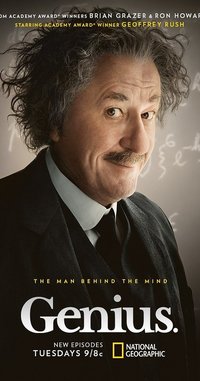 It is no secret that I am an unabashed Albert Einstein fan boy (you may remember my fawning The Great, Geeky Quantum Debate or my rabid The Tao of Einstein). So you will not be surprised to know I really enjoyed the National Geographic Channel’s recent 10-part miniseries, Genius. You will likely discount my enthusiastic recommendation by 50 percent. I understand. But really, watch it anyway. You might become a fan girl or boy too.
It is no secret that I am an unabashed Albert Einstein fan boy (you may remember my fawning The Great, Geeky Quantum Debate or my rabid The Tao of Einstein). So you will not be surprised to know I really enjoyed the National Geographic Channel’s recent 10-part miniseries, Genius. You will likely discount my enthusiastic recommendation by 50 percent. I understand. But really, watch it anyway. You might become a fan girl or boy too.
Geoffrey Rush plays the older Einstein and you know his talent. He is uncanny in the role. You probably do not know Johnny Flynn (no, horrified Timberwolves fans, not that Jonny Flynn!). Flynn plays the younger, pre-WWI Albert. He, too, is outstanding. Moreover, Samantha Colley as Einstein’s first wife Mileva Maric—a troubled and tragic figure—is impressive in a difficult role (at times her Serbian accent seems vaguely Scottish to me, but that is a small nit to pick at). Uncanny, outstanding, impressive; you will just have to see the series for yourself to pass judgment on my evaluations. I am giving short shrift to the rest of the cast lest I lose all credibility. It is just a well done series all around and the quality of the actors is a big part of that.
The series is based on Walter Isaacson’s excellent biography, Einstein: His Life and Universe. As far as I can recall, it follows it closely. One minor and understandable exception: though Isaacson accepts the logical and widely shared conclusion that Albert and Mileva’s first child Lieserl died at two years old, he certainly didn’t portray her life and death in anything close to the detail shown in the program. Her existence was unknown to the world at large until the 1980s and the letters that revealed her birth say nothing of her fate. Still, her (almost certain) tragic loss must’ve had a profound effect on the young couple. And it is Albert’s sad relationship with Mileva that takes center stage in this drama.
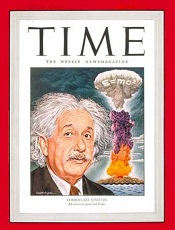 The idea that Maric made significant contributions to Einstein’s astounding 1905 papers is a popular one, but not one well-supported by the available evidence. Most scholars reject the notion that she merited anything like co-author credit on these early papers. However, it is quite likely she made unacknowledged contributions, at least as a sounding board and to check Einstein’s math. Isaacson covered this topic in his biography, but my memory is fuzzy on the nuances of his take. The series portrayed Mileva as deeply wounded by her marginalization by Albert (and everyone else). What we don’t and can’t know is what kind of scientist she may have been had circumstances been otherwise than they were. Which, of course, can be said of untold numbers of women of science (or potential women of science) in those days and, in many parts of the world, these days.
The idea that Maric made significant contributions to Einstein’s astounding 1905 papers is a popular one, but not one well-supported by the available evidence. Most scholars reject the notion that she merited anything like co-author credit on these early papers. However, it is quite likely she made unacknowledged contributions, at least as a sounding board and to check Einstein’s math. Isaacson covered this topic in his biography, but my memory is fuzzy on the nuances of his take. The series portrayed Mileva as deeply wounded by her marginalization by Albert (and everyone else). What we don’t and can’t know is what kind of scientist she may have been had circumstances been otherwise than they were. Which, of course, can be said of untold numbers of women of science (or potential women of science) in those days and, in many parts of the world, these days.
Another theme running through this drama is how as an non-conformist, pacifist Jew, Einstein was under suspicion and in danger for his entire life. This treatment before and during WWII is personified in the series by the jealous anti-Semitic German scientist, Philipp Lenard. “A vindictive bastard Nazi” should be inscribed on his tombstone. And prior to Einstein’s emigration to New Jersey and until the end of his life, the vindictive bastard paranoiac J Edgar Hoover tried to keep him out of America (and to discredit and deport him once he’d arrived). This is illuminated in the program. In a beautifully ironic twist, the FBI agent sent to Berlin to interview Einstein in response to his asylum request and to (Hoover intended) find reasons to deny it, not only defied the Director to his personal peril, he went on to save thousands of Jewish lives by expediting their asylum requests in the run-up to the war. The depiction of the final negotiation of these interviews is a highlight of this series. Be sure to look for the blurb about this agent’s career that runs after the conclusion of the final episode.
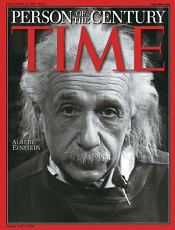 Hoover’s vendetta continued after Einstein, the lifelong pacifist—with great reluctance—worked to persuade FDR to build an atomic bomb before the Germans could achieve their own goal of doing so. Only the specter of this greater evil impelled him to act. The portrayal of the tragic sadness and bitter anguish with which Einstein faced the realization that his name would be forever linked in the public’s mind with the horrors of nuclear weapons is a poignant one.
Hoover’s vendetta continued after Einstein, the lifelong pacifist—with great reluctance—worked to persuade FDR to build an atomic bomb before the Germans could achieve their own goal of doing so. Only the specter of this greater evil impelled him to act. The portrayal of the tragic sadness and bitter anguish with which Einstein faced the realization that his name would be forever linked in the public’s mind with the horrors of nuclear weapons is a poignant one.
The science? Yes, it is almost secondary. Present, accurate (as far as I can tell), but threaded deftly in what is foremost the very human story of the flesh-and-blood Person of the Century. My century.
Bad (process)
Despite my disappointment with much of The History Channel’s programming, I do occasionally find something of interest there. Just a few weeks ago I was intrigued by news reports touting the upcoming Amelia Earhart: The Lost Evidence special. Accounts of an important find—a photograph buried for years in the National Archives—all but guaranteed the question of the aviator’s fate was finally answered. History’s mysteries is a frequent THC subject. Generally, at least one of bigfoot, the Loch Ness monster, Area 51, or Jesus’s wife is somehow implicated. This one didn’t seem to posit an alien abduction, so I set my DVR in anticipation. Who doesn’t love a good mystery?
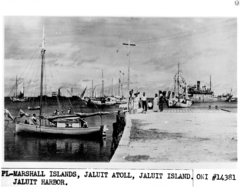 The program did not disappoint. I was immediately put on guard when the host (a former deputy executive director of the FBI) claimed the evidence presented would uncover “possibly the biggest government conspiracy ever.” Uh oh. Maybe little green men will somehow be to blame. But the program was well done and the case for their solution—bolstered by the “new” photograph—was impressively supported. I knew the basic facts of the Earhart mystery before watching the program, including the existence of several competing theories, but I was not well-versed in its details. At the end of the two-hour special I was certainly impressed. A coherent picture was presented and the photograph seemed to support a story that, after all, was long espoused by credible people with reasons to know. I knew, on the other hand, that the program presented only arguments in favor of its interpretation. There were counter arguments I was eager to hear. Surely the presentation would spur a fresh debate and I looked forward to following it.
The program did not disappoint. I was immediately put on guard when the host (a former deputy executive director of the FBI) claimed the evidence presented would uncover “possibly the biggest government conspiracy ever.” Uh oh. Maybe little green men will somehow be to blame. But the program was well done and the case for their solution—bolstered by the “new” photograph—was impressively supported. I knew the basic facts of the Earhart mystery before watching the program, including the existence of several competing theories, but I was not well-versed in its details. At the end of the two-hour special I was certainly impressed. A coherent picture was presented and the photograph seemed to support a story that, after all, was long espoused by credible people with reasons to know. I knew, on the other hand, that the program presented only arguments in favor of its interpretation. There were counter arguments I was eager to hear. Surely the presentation would spur a fresh debate and I looked forward to following it.
It didn’t take long to read contradictory information. Just two days after the program aired, a Japanese blogger found the blockbusting photograph in an online library. It turns out it was published in a Japanese photography collection in 1935, two years before Earhart’s final flight. Oops! Someone failed to do due diligence on this. THC has promised to do a full investigation, and says “Ultimately historical accuracy is what is most important. We’ll continue to follow the evidence in an effort to get to the truth.” We’ll see. It’s hard to imagine how a “full investigation” can conclude anything other than “Nevermind!” (Unless, of course, the huge government conspiracy is ongoing and includes a Japanese online library archive. Or that the aforementioned little green men employed time travel. I should not be surprised.)
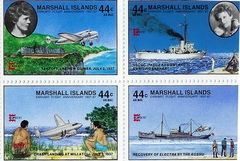 So why am I almost recommending this program? I am because it is a cautionary tale and because it does include an interesting summation of one of the three plausible explanations for the disappearance of the admirable Amelia Earhart (and, oh yeah, Fred Noonan). That the photographic “smoking gun” is an irrelevant non-factor doesn’t make it any less likely to be true. National Geographic’s brief summary of the three “contenders” is helpful. They call the History Channel’s theory “unlikely,” preferring the explanation they are trying to prove. Of course.
So why am I almost recommending this program? I am because it is a cautionary tale and because it does include an interesting summation of one of the three plausible explanations for the disappearance of the admirable Amelia Earhart (and, oh yeah, Fred Noonan). That the photographic “smoking gun” is an irrelevant non-factor doesn’t make it any less likely to be true. National Geographic’s brief summary of the three “contenders” is helpful. They call the History Channel’s theory “unlikely,” preferring the explanation they are trying to prove. Of course.
An NBC video excerpt of the now-discredited photographic analysis is of interest now in an impending-train-wreck sort of way.
(America the) Beautiful
 The Smithsonian Channel is a reliable provider of easy-to-digest Americana on the small screen. As far as I know, at least, it does not pander to American tastes for pseudo-historical nonsense. Yet.
The Smithsonian Channel is a reliable provider of easy-to-digest Americana on the small screen. As far as I know, at least, it does not pander to American tastes for pseudo-historical nonsense. Yet.
Aerial America is pure eye candy. This country really is gorgeous, and the simple trick of presenting spectacular video footage shot from low-flying, slow-moving airplanes (or drones?) is a winner. The narration is a helpful and fairly light mixture of historical and contemporary information. Positive and affirming for the most part, the series does frequently shine a light on our country’s absolutely shameful treatment of the Native American people who lived on and loved this land for so long before Europeans arrived.
The series includes hour-long programs on all 50 states, though at least a few states are shortchanged. The Dakotas are covered in one episode and California merits two. Additionally, there are themed episodes that do not center on a specific geographical area. “Natural Wonders” is an example.
Pick a state, any state, and enjoy the view!
